As coordinator of Bee City USA and Bee Campus USA, I had the privilege of visiting some of our affiliate cities and campuses in northern Georgia last month. I will be sharing highlights of the trip over the next few blog posts.
University of Georgia
My first affiliate visit was to University of Georgia (UGA) in Athens for the Protecting Pollinators in Urban Landscapes conference. Tyra G Byers, Director of the Interdisciplinary Sustainability Certificate at UGA; Peter Helfrich, Chairperson Decatur’s Bee City committee (aka Beecatur); and I were invited to hold a session, “Bee City USA and Bee Campus USA: Mobilizing Communities to Protect Pollinators.” We had a great time workshopping ideas for pollinator habitat, community engagement and pesticide reduction.
After the conference, Tyra was kind enough to lead attendees on a tour of some of the pollinator habitat around UGA.
First, we stopped by the Snelling Dining Hall to check out their pollinator education campaign, highlighting the importance of pollinators to food production.
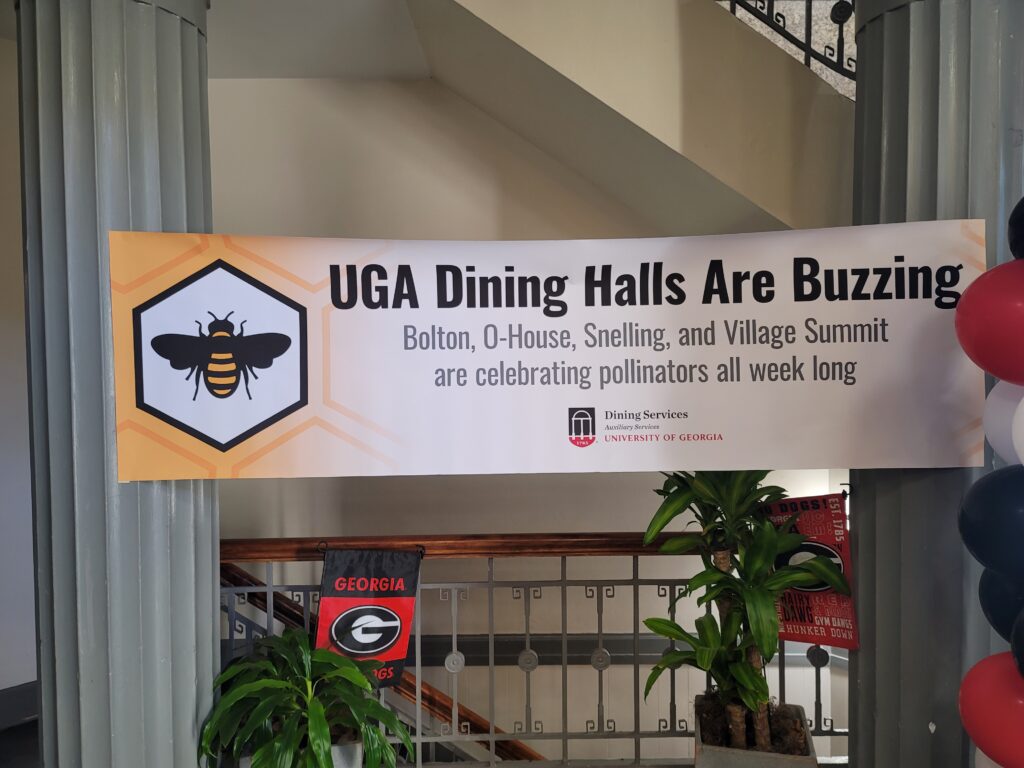

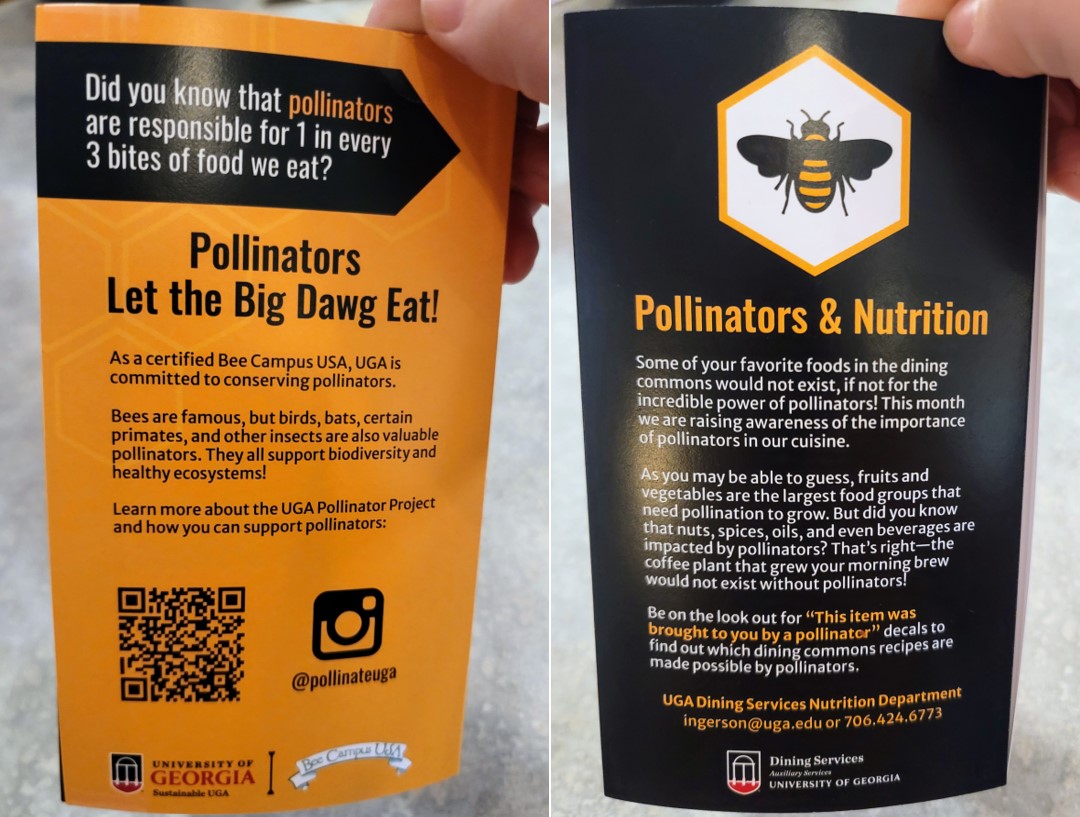
We visited the UGA Trial Gardens (which I visited twice more!) – and saw plenty of carpenter bees, wasps, butterflies, and this beautiful sphinx moth – note the pine straw which acts as a mulch, which can help retain water and suppress weeds.


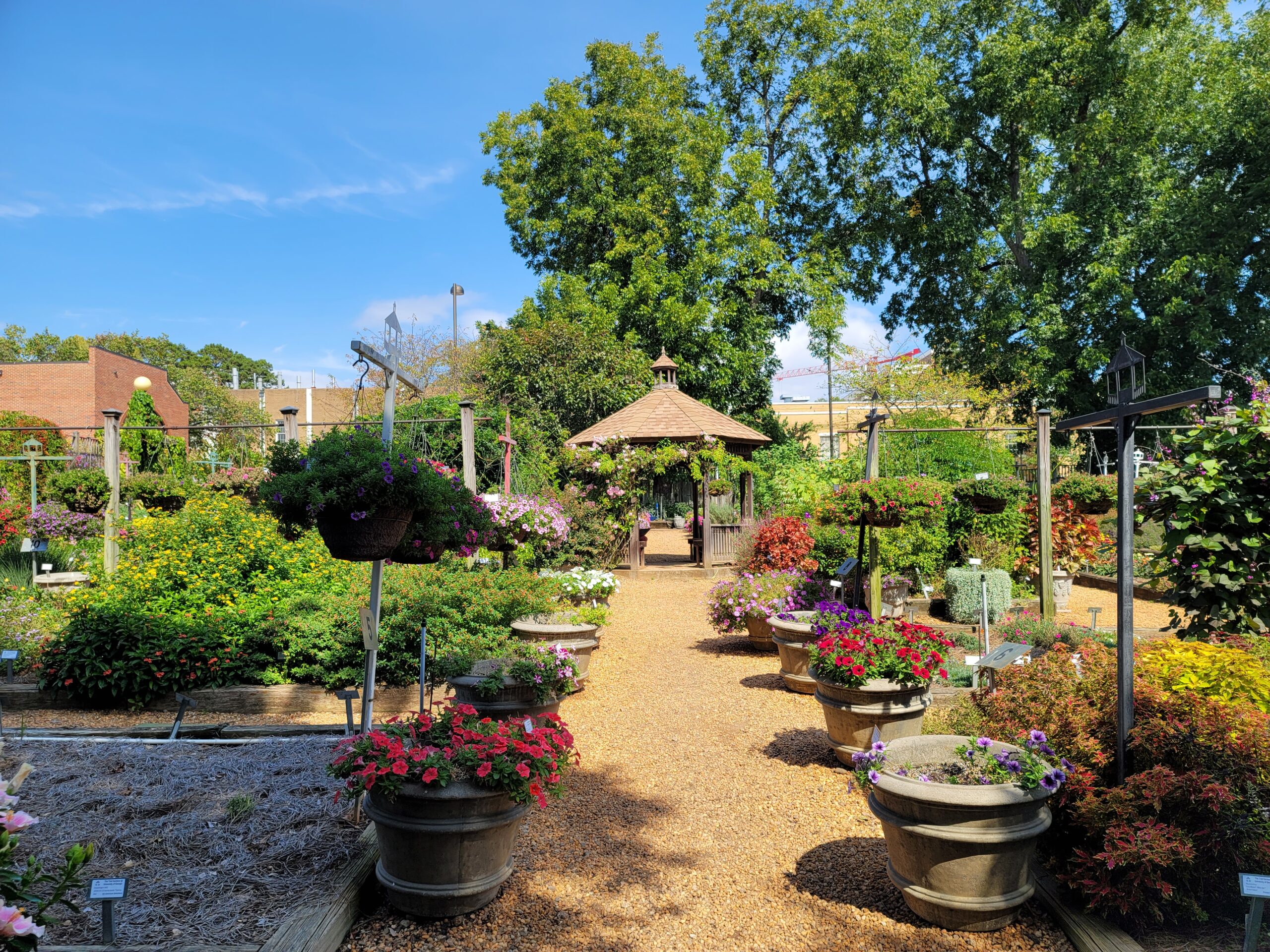
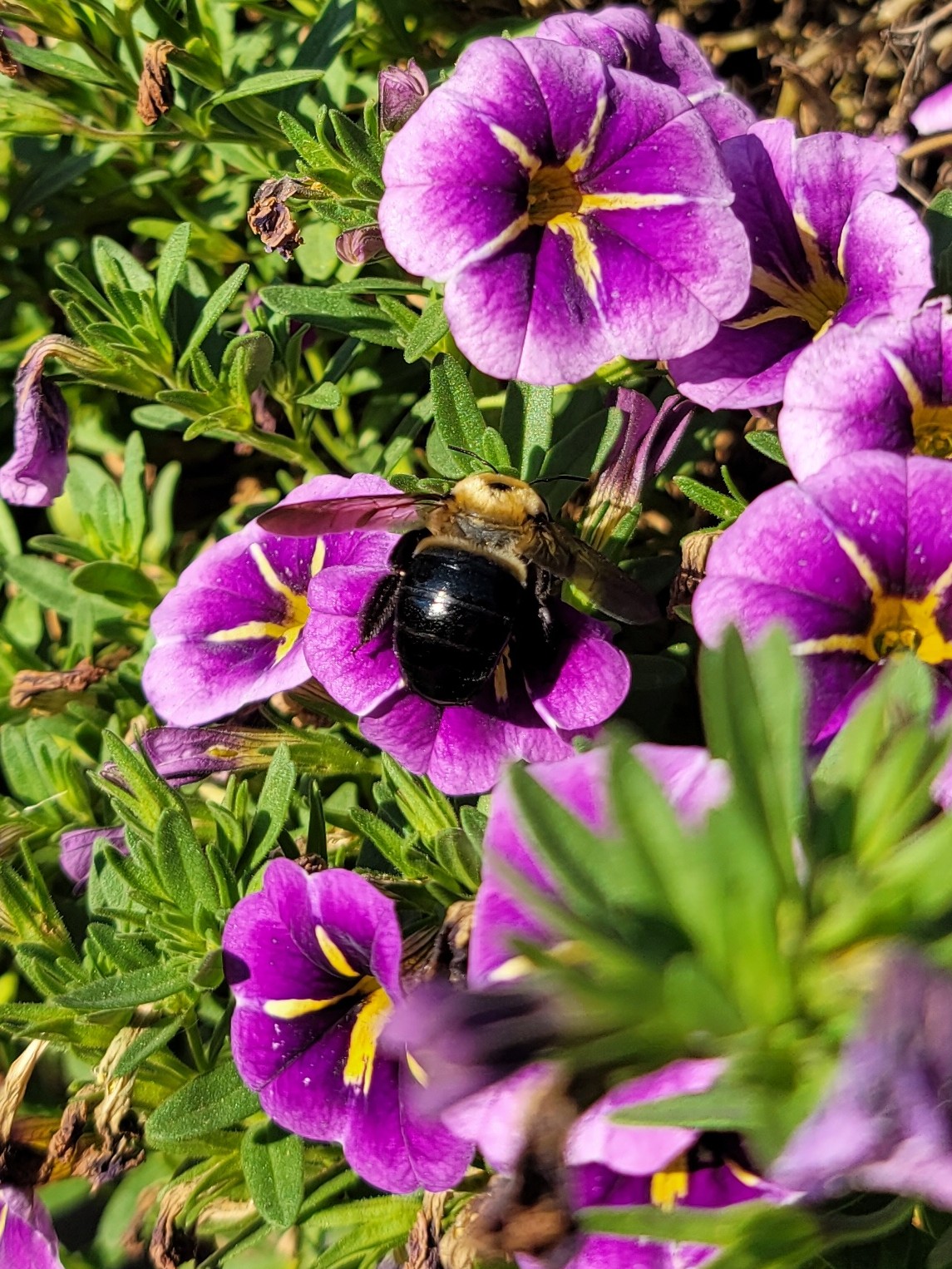
LOTS of buzzing carpenter bees.
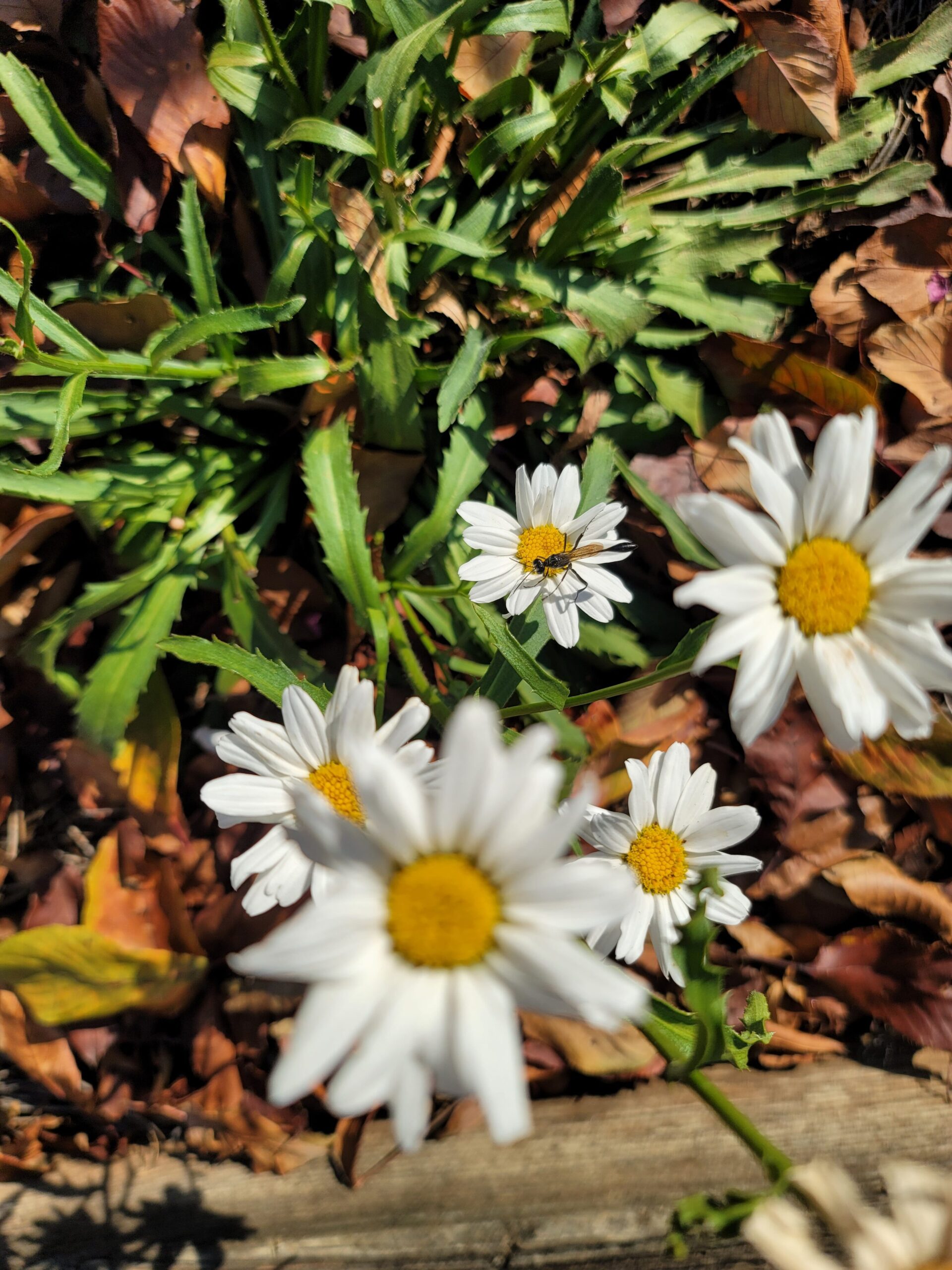
My favorite spot was the Green Roof Garden on top of the Geography-Geology building, which includes raised vegetable beds and pollinator habitat. We saw a swirl of monarch butterflies overhead.
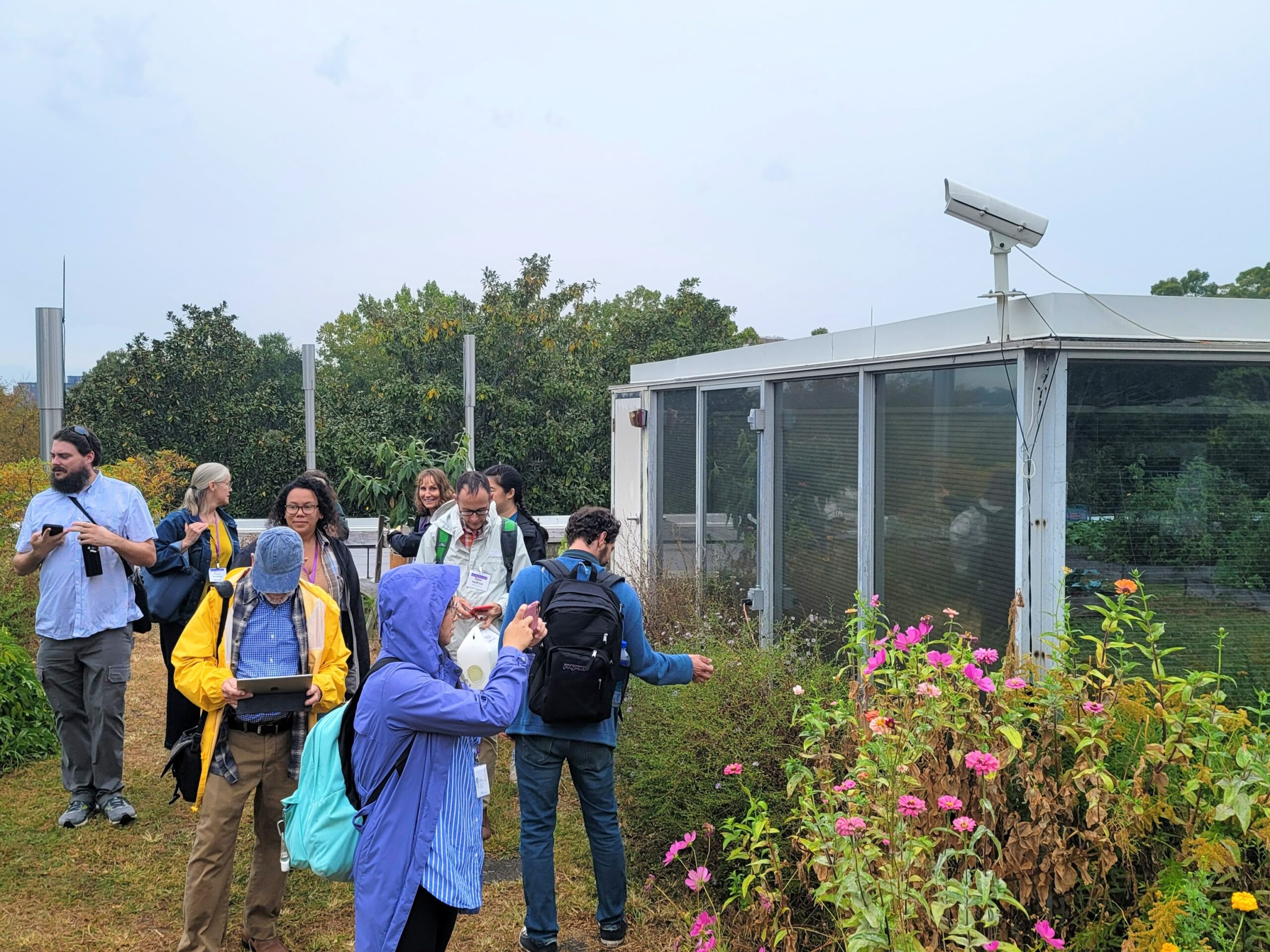
There were some great examples of leaving the leaves at the ceramics building.

Cues to Care
One tool that came up repeatedly over the course of the conference was “cues to care” (a term from landscape architect Joan Nassauer). Native pollinator habitat can look a little messier than a lawn, especially if you are leaving the leaves and saving the stems. Some people may see this as a neglected landscape and may feel it does not meet cultural expectations of how a yard or park should look.
Cues to care such as hardscaping, maintaining a mowed buffer around walkways, raised beds, adding signage, etc. can help people understand that a landscape is cared for and intentional. And it can be educational and community-building. I think this is something we can all keep in mind as we look towards our work in 2023.
Stay tuned for Part Two: our visit to Norcross, Georgia.





